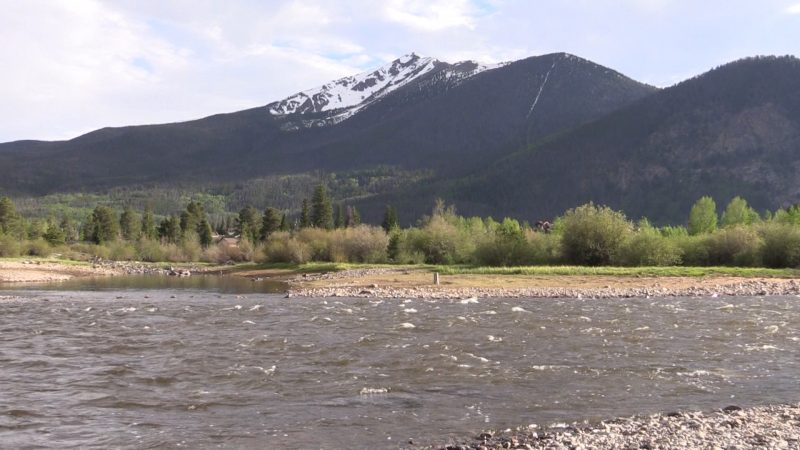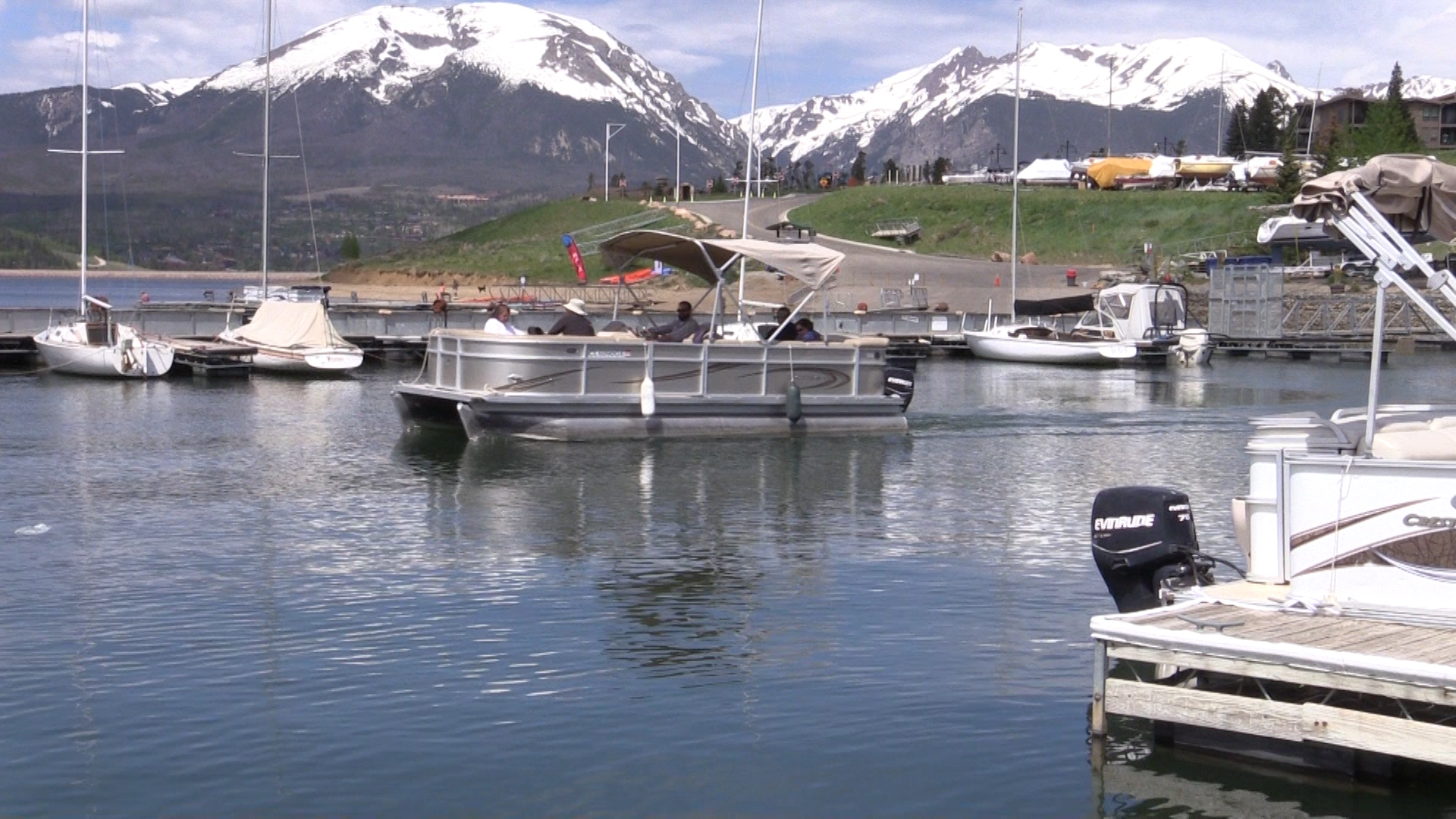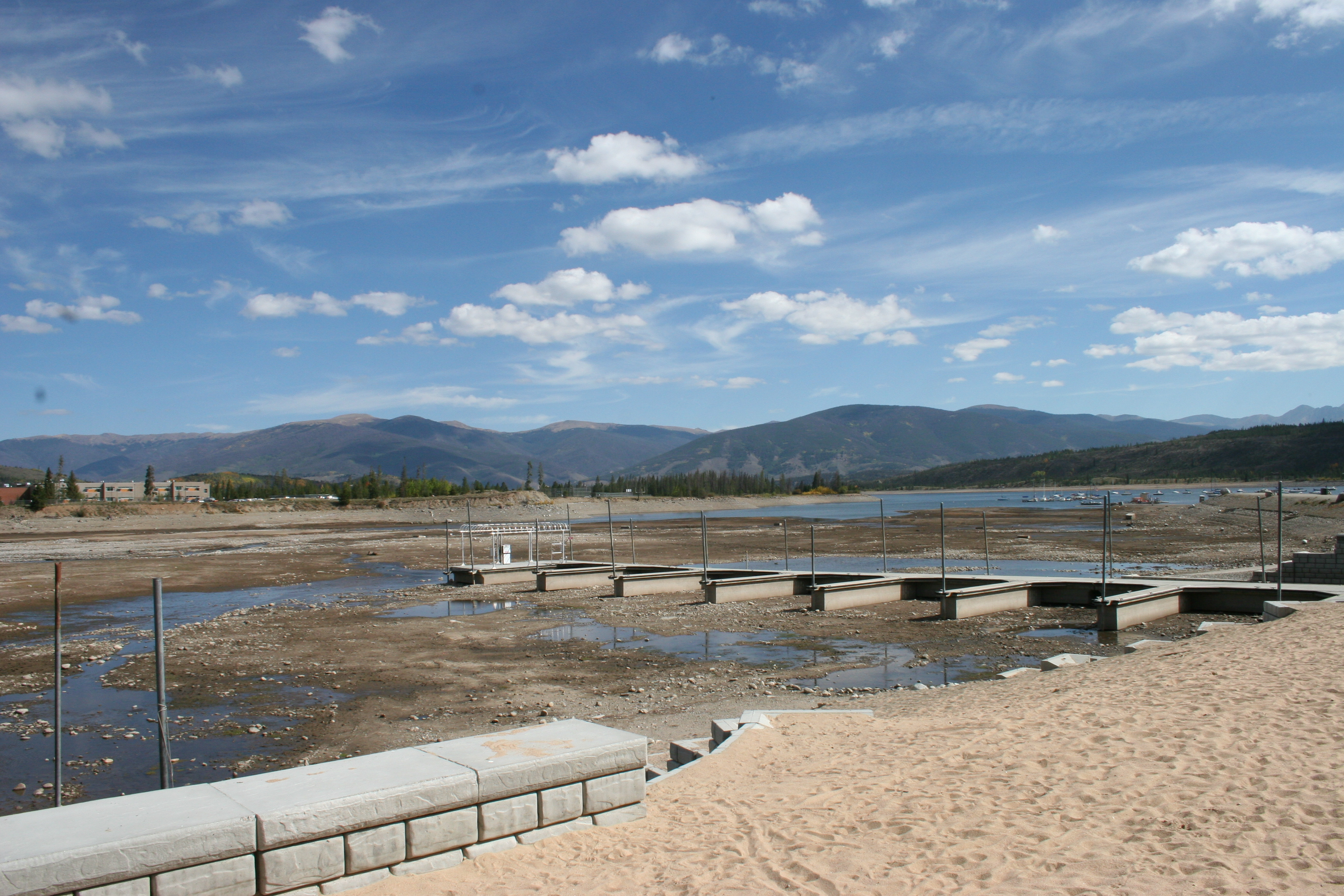
Fillin' Dillon: Reservoir hits 84-billion gallon mark
Dillon Reservoir in Summit County filled to capacity Thursday, a welcome sight on both sides of the Continental Divide.
“Seeing it fill is always a relief,” said Cindy Brady, water resource engineer. “Dillon is a huge part of our water supply, so when it’s full, it means we had a good snow year.”
Dillon is Denver Water’s largest storage reservoir, capable of holding 257,304 acre-feet of water. That’s nearly 84 billion gallons or enough to fill 80 Mile High Stadiums. Dillon has hit its high mark all but nine times since it first filled in 1965.
The Blue River basin, which feeds Dillon Reservoir, also provides an average of 30 percent of Denver’s annual water supply, enough water for 320,000 homes every year.
The reservoir hit its capacity elevation of 9,017 feet above sea level on June 22, thanks to above-normal snowpack this past winter combined with efficient water use in the Denver metro area. The mountain snow runoff reached its highest point on June 10, when water from the three tributaries poured 2,042 cubic feet per second of water into the reservoir.
To put that in perspective, imagine a wall of 2,042 basketballs rolling into the river every second.
Denver Water built Dillon in 1963 to ensure Denver had an adequate water supply for its growing population, but the reservoir’s role has grown in the past five decades.
“Our primary goal is to fill the reservoir every year," Brady said. “Over the years we’ve built partnerships with the community to balance mountain snowpack and customer demand in Denver with boating on Dillon and river flows downstream.”
And that makes Dillon one of Denver Water’s most complex reservoirs to manage.
“What happens in Denver has a direct correlation with Dillon’s water level,” Brady said. “If water demand goes up in Denver, more water has to be diverted under the Continental Divide to the Front Range.”
Water managers also try to minimize the impact of high water below Dillon Dam in the town of Silverthorne by regulating how much water they release from the reservoir during high springtime flows.
On June 11, outflow from the dam into the Blue River reached 1,514 cubic feet per second, without any issues or concern along the river.
Coordinating downstream water rights, maintaining a quality fish habitat and providing stable rafting flows are also taken into account in Dillon’s operating plan.
“It’s important to work with the Summit County community,” Brady said. “It’s good for us to understand their needs and it’s important that, if we can’t meet their needs, they understand why.”
Denver Water’s goal is to keep the reservoir as close to full as possible through Labor Day, but maintaining that level is dependent on weather conditions, water use in Denver and other factors.
For example, during the drought year of 2003, Denver Water pulled 162,000 acre-feet of water from Dillon through the Roberts Tunnel. The reservoir dropped to 35 feet below capacity on April 27, 2013.
But in 2015, after a wet spring and summer in Denver, customers let Mother Nature do the watering for them and water managers only needed 19,400 acre-feet of water from the reservoir. The reservoir filled on July 1, and remained full through Sept. 12.



